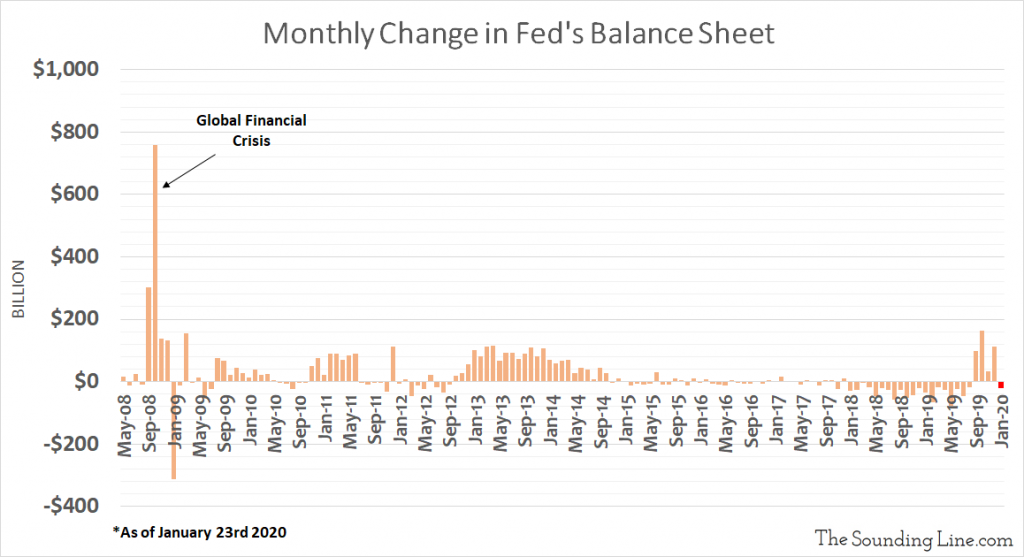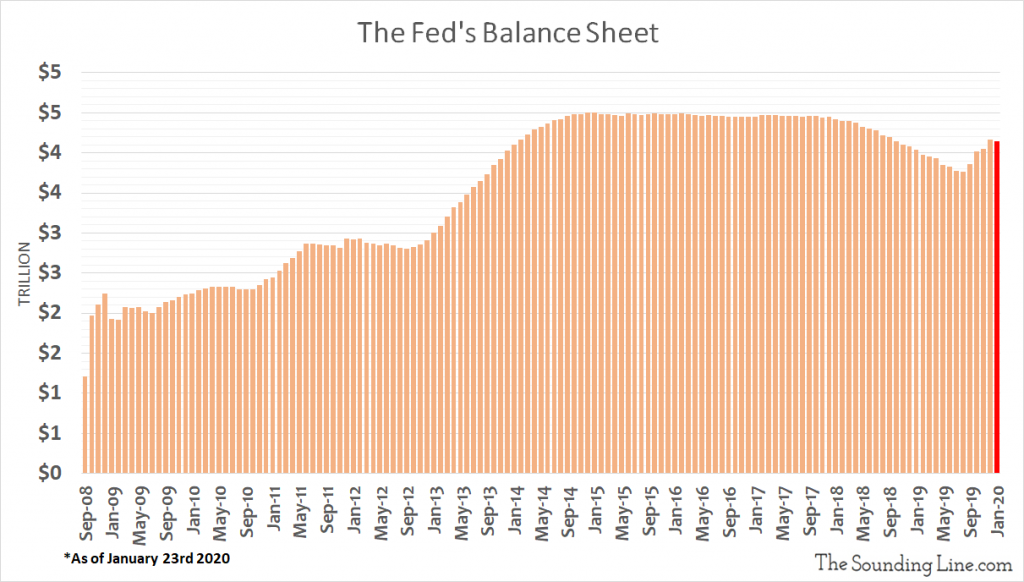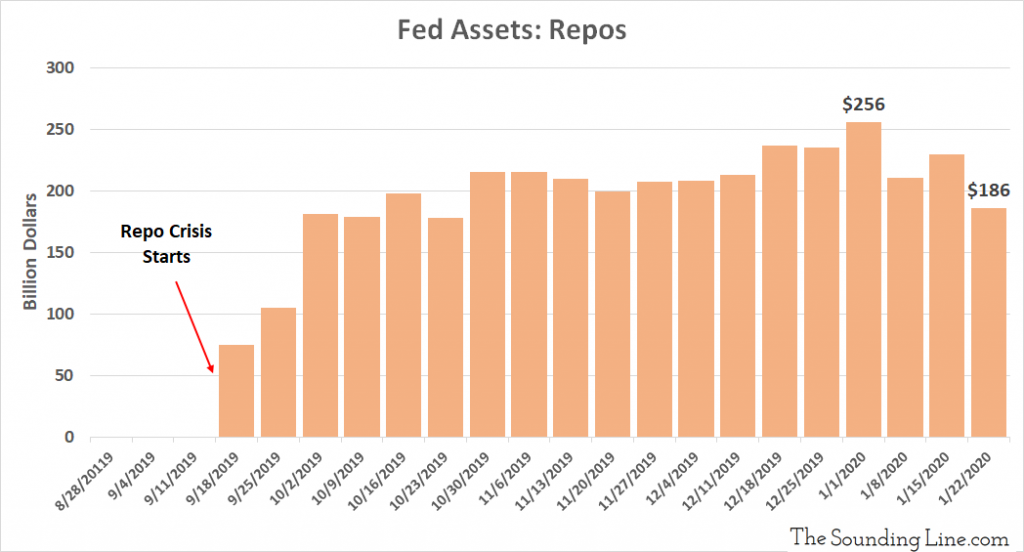Submitted by Taps Coogan on the 24th of January 2020 to The Sounding Line
Enjoy The Sounding Line? Click here to subscribe for free.
Enjoy The Sounding Line? Click here to subscribe.
The Fed’s balance sheet has shrunk from $4.165 trillion at the end of December to ‘just’ $4.145 trillion, a roughly $20 billion reduction, as of the most recent data from January 22rd, 2020.


The massive end-of-year expansion of the Fed’s repo facility has now reversed, shrinking the Fed’s repo holdings from a peak of $256 billion on January 1st, 2020 to ‘just’ $186 billion as January 22nd, 2020.

With the Fed’s one-off year-end repos now having expired, including a 30 day repo that expired January 17th, the current balance of repos is in line with the Fed’s baseline standing repo facility of “at least $150 billion” in overnight repos and $45 billion of two-week repos. Of course, the size of the Fed’s repo facilities is subject to change at any point and is fairly ambiguously defined.
If the Fed does not change its repo faculties further, its balance sheet should resume growth via its ‘Not-QE‘ program for the next couple months. As such, if the modest contraction in Fed liquidity in January doesn’t cause the market heartburn soon, it likely never will.
The language defining the Fed’s ‘Not-QE’ program says it will run until sometime in the second quarter of 2020, which starts in just two months. That means that the Fed should provide details on the future trajectory of its balance sheet in the coming weeks and months. Whether they choose to continue the balance sheet expansion will be key for financial markets. My guess is that they will continue the expansion, though perhaps at a moderated pace of $40 billion-a-month after the second quarter.
If you would like to be updated via email when we post a new article, please click here. It’s free and we won’t send any spam.
Would you like to be notified when we publish a new article on The Sounding Line? Click here to subscribe for free.

